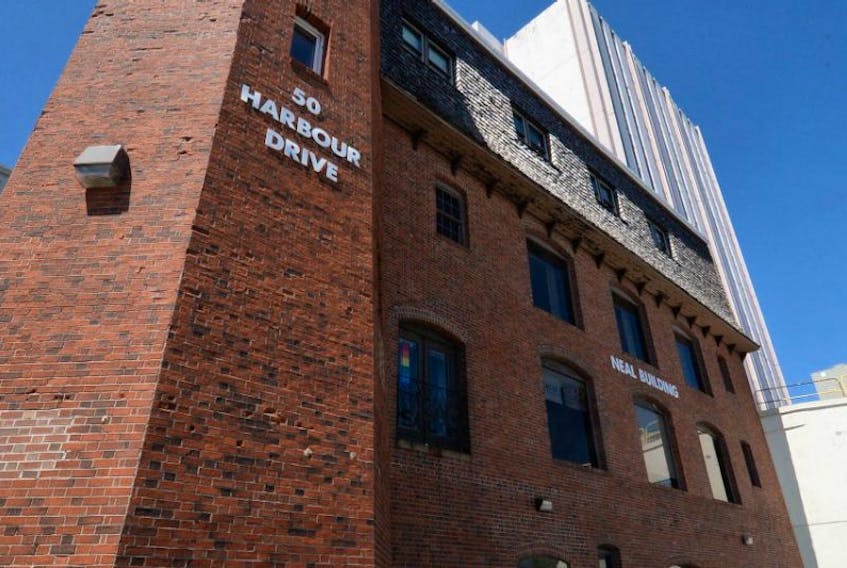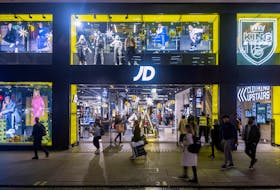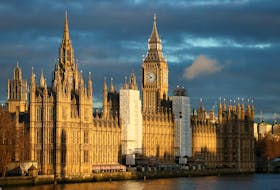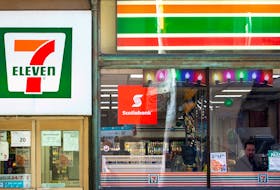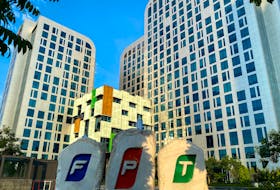Common Ground is in the midst of a feasibility study on the establishment of an innovation hub with an arts focus at a number of Slate-owned properties in the downtown core.
“A lot of times a developer will either build a building or refurbish a building and then ask, ‘Who needs to use this?’” explains Dave Lane, executive director of Common Ground.
“What we’re doing is we’re saying, ‘Hey, come here, come into our building and we’ll see how to redevelop it for you.’”
The idea stems from a piece Lane wrote for a local monthly publication two years ago that explored the concept of adopting a co-working approach that would see vacant properties utilized by giving a home to small business, start-ups, entrepreneurs, and arts organizations and artists.
“What type of space do they need and how much would they be able to pay for such a space, and what kind of management will we need in place to co-ordinate all the comings and goings of these different types of activities?” he says.
Over the last year, Common Ground and its partners have been working with Slate to activate properties such as the former Fortis Building at the corner of Water Street and Job’s Cove, and the Neal Building on Harbour Drive.
One component of the idea has seen a number of Common Ground members set up shop in the Fortis Building.
“We have a consultant, we have a small insurance company, a project management company, those are what I’ll call the start-ups or small businesses just to have an office,” says Lane.
The other aspect of the program involves a partnership with Business and Arts Newfoundland and Labrador in establishing a pop-up arts space that has seen an incredible uptake from the local arts community, according to executive director Amy Henderson.
“People were desperate to jump at the opportunity to have rehearsals, to have studio space, to have committee and board meetings,” she says.
“The need for a space and place to go and bump into each other in the halls, but also to have a space that’s big enough where you can have a rehearsal and has the amenities that you need.”
In May and June, Henderson says, the arts community piled up 450 hours of usage by groups like Perchance Theatre, the Nickel Independent Film Festival and actors from Shakespeare by the Sea.
What’s more, use of the space came at nominal or no cost to the users.
“There’s so much interest for people, even to rent the space, that we’re still having people in almost on a daily basis looking to see the spaces and making plans into the fall for hopefully subsidized rehearsal space and office space as well.”
Lane says having Business and Arts NL involved was key to his original idea because of their expertise in how both sides can benefit one another.
“That’s exactly what we need because we keep talking about these innovation agendas and driving economic development, but we’re having a struggle to find where the arts fits into that even though it’s such a huge strength that we have,” he says.
Another collaboration stemming from the Neal Building occupation is with the Refugee Immigrant Advisory Council (RIAC), which is housed on the second floor.
“Entrepreneurs, by definition, are risk takers and new Canadians are more likely to be entrepreneurs because nothing is as risky as what they just did, which is move their lives,” says Lane.
“So to connect them with our small business community and our entrepreneur community makes a lot of sense, so it’s really great to have them there.”
For Henderson, meanwhile, the interaction with the arts community has her organization “excited to see the greater potential of that if there were more players in the building.”
The study is also looking into vacant heritage buildings at 151 to 157 Water St., also owned by Slate.
“We’re measuring all the rooms in there, we’re looking at all the materials used to build the buildings and we’re starting to brainstorm what type of activities could take place in those,” says Lane.
“We are saving heritage buildings, or we’re trying to without saying, ‘Keep them as they are.’ We’re saying, ‘Let’s make them useful today.’”
Lane expects the draft of the report will be ready by the end of October and ready for submission for a Nov. 30 deadline.
Lane comes full circle
The feasibility study into an innovation and arts hub at vacant downtown properties has taken Dave Lane back to the roots of his municipal career.
In 2010, Lane was involved in a response to a Fortis Properties proposal to retrofit the Fortis Building and build a new 15-storey building next to it.
The idea of a new high-rise in the downtown core didn’t sit well with the public, and Fortis eventually abandoned the plan and opted instead to build Fortis Place at the west end of Water Street.
Happy City, a group aimed at facilitating open dialogue about municipal issues, was born from the ashes of that abandoned proposal, with Lane as its chair.
But identifying a need to foster a strong and trusting relationship with city hall, Lane decided to run for council and was elected as councillor at large in the fall of 2013.
Earlier this year, while exploring space at the Fortis Building, Lane came across a piece of paper with the designs for the 15-storey building that was scuttled.
“It struck me, ‘This is where I began,’” says Lane.
“It’s a nice little circle happening where I got into public life by trying to save some heritage buildings and it’s not just preventing demolition now, it’s about adaptive re-use.”
Twitter: kennoliver79

